Άρμα Μάχης Μ-48
Το Μ48 Patton είναι ένα μέσο άρμα μάχης Αμερικανικής προέλευσης, που βρέθηκε σε υπηρεσία πολλών ΝΑΤΟϊκών και άλλων στρατών τις προηγούμενες δεκαετίες, ενώ συνεχίζει να υπηρετεί σε αρκετές χώρες, μεταξύ των οποίων και η Ελλάδα.
Οι αρχικές εκδόσεις έφεραν πυροβόλο 90mm ενώ οι μεταγενέστερες πυροβόλο 105mm. Έχει θωράκιση ομοιογενούς χάλυβα πάχους 120mm, και βάρος 50τόνων. Μέγιστη ταχύτητα επί οδού 48 χλμ/ώρα. Ήταν το πρώτο Patton με πλήρωμα 4 ατόμων (αντί 5).
H παραγωγή του άρματος M-48 άρχισε το 1952 και οι πρώτες παραδόσεις στον Αμερικανικό στρατό έγιναν τον επόμενο χρόνο. H αρχική παραλλαγή διέθετε βενζινοκινητήρα και πυροβόλο των 90χιλ. και τo άρμα στη μορφή αυτή υπηρέτησε σε πολλούς στρατούς, μεταξύ των οποίων και ο Ελληνικός. Σύντομα έγινε επιτακτική η ανάγκη για αναβάθμιση των δυνατοτήτων του άρματος, ώστε να μπορεί να ανταποκρίνεται στο σύγχρονο θέατρο επιχειρήσεων και να επιχειρεί με τα άρματα νέας γενιάς. Έτσι δημιουργήθηκαν διάφορες παραλλαγές του άρματος με βελτιωμένα χαρακτηριστικά, οι σπουδαιότερες από τις οποίες ήταν η A3 και A5.
Η έκδοση Α3 διέθετε πολλές και σημαντικές βελτιώσεις, από τις οποίες η πιο σημαντική ήταν ο νέος δωδεκακύλινδρος πετρελαιοκινητήρας Continental AVDS-1790 (που απέδιδε 750 ίππους στις 2.400 στροφές/λεπτό) και η αντικατάσταση του συστήματος ελέγχου πυρός. Ακολούθησε η παραλλαγή A5 που εκτός από τις παραπάνω βελτιώσεις περιελάμβανε και την αντικατάσταση του πυροβόλου M41 των 90mm με το M68 των 105mm, δηλαδή το πυροβόλου L7 κατά την αμερικανική ορολογία. Στο κιτ εκσυγχρονισμού περιλαμβάνονταν και νέα πέλματα ερπύστριας καθώς και συζυγές πολυβόλο M-60D των 7,62mm. Το νέο άρμα μάχης αποτέλεσε τη μέση λύση για πολλούς στρατούς που δεν διέθεταν τα τεράστια κονδύλια για την απόκτηση νέων αρμάτων, μεταξύ των οποίων και ο Ελληνικός Στρατός.
Το Μ48 προέρχεται από την οικογένεια των αρμάτων Patton, που ξεκίνησε με το Μ26 στα τέλη του δευτέρου παγκοσμίου πολέμου. Αναπτύχθηκε ως αντικαταστάτης του M47 Patton, το οποίο υπέφερε από προβλήματα αξιοπιστίας, έχοντας έναν εντελώς νέο πύργο, βελτιωμένη ανάρτηση και ανασχεδιασμένο σκάφος.
Το πρωτότυπο παρουσιάστηκε το 1951, και από το 1952 ξεκίνησε η μαζική παραγωγή η οποία απέδωσε ως το 1959 (οπότε και το νέοΜ60 Patton τέθηκε σε παραγωγή) συνολικά περίπου 12.000 κομμάτια.
Βασικές Εκδόσεις
Μ48: Η αρχική έκδοση του άρματος
Μ48Α1: Νέα θυρίδα για τον οδηγό, και νέος πυργίσκος για τον αρχηγό, που επιτρέπει την επαναγέμιση του πολυβόλου Μ2 μέσα από τον πύργο
Μ48Α2: Νέος κινητήρας και βελτιωμένη ανάρτηση
Μ48Α3: Μ48Α1 με νέο κινητήρα και βελτιωμένο σύστημα ελέγχου πυρός
Μ48Α4: Μ48Α3 με πύργο από Μ60
Μ48Α5: Πυροβόλο 105mm
Επιχειρησιακή Δράση
Το Μ48 αποτέλεσε το κύριο άρμα μάχης αρκετών στρατών, και συμμετείχε σε πολεμικές επιχειρήσεις. Το Μ48 υπηρέτησε στο Βιετνάμ με τον στρατό των ΗΠΑ. Πολέμησε επίσης και στους αραβοϊσραηλινούς πολέμους του 1967 και του 1973, με τους στρατούς του Ισραήλ και της Ιορδανίας, ενώ σημαντική δράση είδε με τον στρατό του Πακιστάν, κατά τους Ινδοπακιστανικούς πολέμους του 1965 και του 1971. Τέλος το Μ48 χρησιμοποιήθηκε και από τον τουρκικό στρατό (από την 5 τεθωρακισμένη ταξιαρχία) κατά τη εισβολή στην Κύπρο το 1974.
Ελληνική Υπηρεσία
Τα Μ48 παραλήφθηκαν για πρώτη φορά από τον Ελληνικό Στρατό τον Σεπτέμβριο του 1963 στα πλαίσια της Αμερικανικής βοήθειας. Αποκτήθηκαν συνολικά πάνω από 1.300 κομμάτια από τις ΗΠΑ και την Δυτική Γερμανία. Το 1990 ο ΕΣ αποφάσισε να αναβαθμίσει 400 Μ48Α5 με το σύστημα MOLF, ο πυρήνας του οποίου είναι το Σύστημα Ελέγχου Πυρός EMES-18, που αναπτύχθηκε για τα Λέοπαρντ 1Α5, το οποίο αναβαθμίζει κατακόρυφα τις δυνατότητες του άρματος. Τα Μ48Α5 MOLF συνεχίζουν να υπηρετούν στον Ελληνικό Στρατό, ενώ οι παλαιότεροι τύποι έχουν πλέον αποσυρθεί.
Ελληνικό Πρόγραμμα Αναβάθμισης
Στις αρχές τις δεκαετίας του '80 διάφορες εταιρίες κατασκευής συστημάτων ελέγχου πυρός άρχισαν να προσφέρουν τα συστήματά τους για τον περαιτέρω εκσυγχρονισμό των M-48. Την ίδια εποχή, ο ελληνικός στρατός τέλειωνε το πρόγραμμα εκσυγχρονισμού των M-48 και παράλληλα αναζητούσε τρόπους αναβάθμισης και εκσυγχρονισμού των αρμάτων AMX-30. Το σχετικό πρόγραμμα προέβλεπε την μετατροπή 525 αρμάτων M-48 στο επίπεδο M-48A5, ωστόσο ο τελικός αριθμός των εκσυγχρονισμένων αρμάτων δεν ξεπέρασε τα 325 και τα υπόλοιπα να παρέμειναν στο επίπεδο A3. H δύναμη αυτή των αρμάτων συμπληρώθηκε το 1989 με 300 επιπλέον άρματα M-48A5 που αποκτήθηκαν από την αμερικανική εθνοφρουρά.
Στις αρχές τις δεκαετίας του '80 διάφορες εταιρίες κατασκευής συστημάτων ελέγχου πυρός άρχισαν να προσφέρουν τα συστήματά τους για τον περαιτέρω εκσυγχρονισμό των M-48. Την ίδια εποχή, ο ελληνικός στρατός τέλειωνε το πρόγραμμα εκσυγχρονισμού των M-48 και παράλληλα αναζητούσε τρόπους αναβάθμισης και εκσυγχρονισμού των αρμάτων AMX-30. Το σχετικό πρόγραμμα προέβλεπε την μετατροπή 525 αρμάτων M-48 στο επίπεδο M-48A5, ωστόσο ο τελικός αριθμός των εκσυγχρονισμένων αρμάτων δεν ξεπέρασε τα 325 και τα υπόλοιπα να παρέμειναν στο επίπεδο A3. H δύναμη αυτή των αρμάτων συμπληρώθηκε το 1989 με 300 επιπλέον άρματα M-48A5 που αποκτήθηκαν από την αμερικανική εθνοφρουρά.
Οι προτεινόμενοι εκσυγχρονισμοί για τα άρματα Μ-48Α3 κρίθηκαν απαγορευτικοί ως προς το κόστος και το πρόγραμμα τελικά τελικά εγκαταλείφθηκε. Μετά την πάροδο ορισμένου χρόνου εξετάστηκε σαν εναλλακτική λύση ο εκσυγχρονισμός των υπαρχόντων M-48A5 και ενεργοποιήθηκε ένας διαγωνισμός για τον εκσυγχρονισμό 200 αρχικά αρμάτων που θα μπορούσε να επεκταθεί σε 400. Έτσι, το άρμα μάχης M-48A5 MOLF αποτελεί αναβάθμιση των παλαιότερων τύπων Μ-48Α5 με την εγκατάσταση ενός νέου συστήματος ελέγχου πυρός, την οποία ανέλαβε (μαζί με τις αναγκαίες μετατροπές στον πύργο και στο σκάφος του άρματος) το 304 ΠΕΒ. Ο συνολικός αριθμός των εκσυγχρονισμένων αρμάτων έφθασε τα 400.
Πρόγραμμα αναβάθμισης σε M-48A5 MOLF
Τα στάδια μετατροπής του άρματος είναι τα ακόλουθα:
Πλήρης ανακατασκευή του άρματος
Προετοιμασία του πύργου από τον οποίο αφαιρούνται όλες οι παλιές βάσεις
O πύργος υφίσταται συγκεκριμένες μηχανουργικές κατεργασίες υψηλής ακριβείας για την τοποθέτηση των νέων συστημάτων
Εγκαθίστανται οι νέες βάσεις που θα μπούν τα απάρτια του συστήματος MOLF όσο και τα παραμένοντα απάρτια, καθώς το άρμα διατηρεί και το παλιότερο σύστημα ελέγχου πυρός που μπορεί να χρησιμοποιηθεί σε περίπτωση ανάγκης
O πύργος βάφεται
Εγκατάσταση του ηλεκτροϋδραυλικού συστήματος
Τοποθετούνται οι ηλεκτρονικές μονάδες των ΣΕΠ
Αρχίζει η διαδικασία των λειτουργικών ελέγχων που διαρκούν αρκετές μέρες
Tοποθετείται ο πύργος επί του σκάφους
Συμπληρωματικοί έλεγχοι που συνεχίζονται και στο στίβο δοκιμών όπου ελέγχεται το σύστημα σταθεροποίησης
Γίνονται οι συγκλήσεις για να διαπιστωθεί ότι το άρμα βρίσκεται εντός προδιαγραφών
Εκτέλεση βολών και προώθηση στη μονάδα
Τα στάδια μετατροπής του άρματος είναι τα ακόλουθα:
Πλήρης ανακατασκευή του άρματος
Προετοιμασία του πύργου από τον οποίο αφαιρούνται όλες οι παλιές βάσεις
O πύργος υφίσταται συγκεκριμένες μηχανουργικές κατεργασίες υψηλής ακριβείας για την τοποθέτηση των νέων συστημάτων
Εγκαθίστανται οι νέες βάσεις που θα μπούν τα απάρτια του συστήματος MOLF όσο και τα παραμένοντα απάρτια, καθώς το άρμα διατηρεί και το παλιότερο σύστημα ελέγχου πυρός που μπορεί να χρησιμοποιηθεί σε περίπτωση ανάγκης
O πύργος βάφεται
Εγκατάσταση του ηλεκτροϋδραυλικού συστήματος
Τοποθετούνται οι ηλεκτρονικές μονάδες των ΣΕΠ
Αρχίζει η διαδικασία των λειτουργικών ελέγχων που διαρκούν αρκετές μέρες
Tοποθετείται ο πύργος επί του σκάφους
Συμπληρωματικοί έλεγχοι που συνεχίζονται και στο στίβο δοκιμών όπου ελέγχεται το σύστημα σταθεροποίησης
Γίνονται οι συγκλήσεις για να διαπιστωθεί ότι το άρμα βρίσκεται εντός προδιαγραφών
Εκτέλεση βολών και προώθηση στη μονάδα
Το MOLF είναι ένα σύστημα ελέγχου πυρός για άρματα μάχης που αναπτύχθηκε και κατασκευάζεται από τη γερμανική εταιρία ATLAS ELEKTRONIK. Αποτελεί παραλλαγή των δοκιμασμένων συστημάτων EMES 18 και EMES 15 που εξοπλίζουν τα άρματα Leopard 1 και Leopard 2 αντίστοιχα. Αποτελείται από σπονδυλωτά υποσυστήματα και η φιλοσοφία του βασίζεται στη δυνατότητα ριζικής αναβάθμισης των δυνατοτήτων ενός άρματος στον τομέα του ελέγχου πυρός. Δίνει δυνατότητα βολής εναντίον στατικών ή κινούμενων στόχων, ενώ το άρμα που το φέρει μπορεί να είναι σε στάση ή να κινείται, με επιπλέον επιλογή χρησιμοποίησης την ημέρα ή τη νύκτα. Το σύστημα εξασφαλίζει μεγάλη πιθανότητα επιτυχίας με την πρώτη βολή, ακόμα και αν το άρμα είναι υπό κλίση και οι περιβαλλοντικές συνθήκες είναι αντίξοες.
Κατά τις δοκιμές που έγιναν από τον ελληνικό στρατό, η πιθανότητα πλήγματος με την πρώτη βολή φτάνει το 98%, ενώ εξίσου σημαντικό μπορεί να θεωρηθεί το γεγονός ότι η πλήρης μεταμόρφωση του άρματος γίνεται επί ελληνικού εδάφους στο 304 ΠΕΒ. Παράλληλα, η κατασκευή ενός σημαντικού μέρους των ηλεκτρονικών έγινε στην Ελλάδα από την ECON Electronics και εξασφαλίζει ακόμα μεγαλύτερη δυνατότητα εγχώριας υποστήριξης. Τέλος, το σύστημα MOLF διαθέτει κατά 80% κοινά μέρη με το σύστημα EMES 18 που εξοπλίζει τα άρματα Leopard 1Α5GR και αποτελεί ένα σημαντικό πολλαπλασιαστή δύναμης του αρματικού δυναμικού.
The M48 Patton is a medium tank that was designed in the United States. It was the third and final tank to be officially named after General George S. Patton, commander of the U.S. Third Army during World War II and one of the earliest American advocates for the use of tanks in battle It was a further development of the M47 Patton tank. The M48 Patton served as an interim tank in U.S. service until replaced by the U.S. Army's first main battle tank (MBT), the M60. The M48 served as the U.S. Army and Marine Corps's primary battle tank during the Vietnam War. It was widely used by U.S. Cold War allies, especially other NATO countries.
The M48 Patton tank was designed to replace the previous M47 Pattons andM4 Shermans. Although largely resembling the M47, the M48 Patton was a completely new tank design. Some M48A5 models served well into the 1980s with American forces, and many various M48 Patton models remain in service in other countries. The M48 was the last U.S. tank to mount the 90 mm tank gun, with the last model, the M48A5, being upgraded to carry the new standard weapon of the M60, the 105mm gun.
The Turkish Army is the largest operator of the modernized M48 MBT, with more than 1,400 M48s in its inventory (around 1,000 have been phased out/in storage or modified to ARVs).
History
On 27 February 1951, OTCM #33791 initiated the design of the new tank, designated the 90mm Gun Tank T-48 (the prefix letter "T" would be replaced by the prefix "X" beginning with the M60 series tank). A deeper modernization than the M46 and the M47, the M48 featured a new turret, new redesigned hull, and an improved suspension. The hull machine gunner position was removed, reducing the crew to 4. It was essentially a new tank. On 2 April 1953, the Ordnance Technical Committee Minutes (OTCM) order #34765 standardized the last of the Patton series tanks as the 90mm Gun Tank M48 Patton.
Nearly 12,000 M48s were built from 1952 to 1959. The early designs, up to the M48A2C's, were powered by a gasoline 12-cylinder engine which was coupled with an auxiliary 8-cylinder engine (called the "Little Joe"). The gasoline engine gave the tank a short operating range and were prone to catching fire when hit. This version was considered unreliable but numerous examples saw combat use in various Arab-Israeli conflicts.
They also were prone to fire when the turret was penetrated and the hydraulic lines ruptured spewing hydraulic fluid (nicknamed "cherry juice" because of its red color) at high pressure into the crew compartment resulting in a fireball. The flashpoint was too low, less than 300 F, causing many burns and deaths to crew members. Beginning in 1959, most American M48s were upgraded to the M48A3 model which featured a diesel power plant. M48s with gasoline engines, however, were still in use in the US Army through 1968 and through 1975 by many West German Army units including the 124th Panzer Battalion.
M48A3
In February 1963, the US Army accepted its first of 600 M48 Patton tanks that had been converted to M48A3's, and by 1964, the US Marine Corps had received 419 Patton tanks. The A3 model introduced the diesel engine, countering the earlier versions' characteristic of catching fire. These Pattons were to be deployed to battle in Vietnam. Because all M48A3 tanks were conversions from earlier models, many characteristics varied among individual examples of this type. M48A3 tanks could have either 3 or 5 support rollers on each side and might have either the early or later type headlight assemblies.
M48A5
In the mid-1970s, the M48A5 upgrade was developed to allow the vehicle to carry the heavier 105 mm gun. This was designed to bring the M48s up to speed with the M60 tanks then in regular use and to simplify ammunition logistics. Most of the M48s were placed into service with reserve units by this time.
By the mid-1990s, the M48s were phased out of U.S. service. Many foreign countries, however, continued to use the M48 models.
Combat Service
Vietnam
The M48s saw extensive action during the Vietnam War, over 600 Pattons would be deployed with US Forces during the war. The initial M48s landed with the US Marine 1st and 3rd Tank Battalions in 1965; the Marine 5th Tank Battalion would later become a reinforcement unit. Remaining Pattons deployed to South Vietnam were in three U.S. Army battalions, the 1-77th Armor near the DMZ, the 1-69th Armor in the Central Highlands, and the 2-34th Armor near the Mekong Delta. Each battalion consisted of approximately fifty seven tanks. M48s were also used by Armored Cavalry Squadrons in Vietnam, until replaced by M551 Sheridan Armored Reconnaissance Airborne Assault Vehicles (ARAAV) in the Divisional Cavalry Squadrons. M48A3 tanks remained in service with the 11th Armored Cavalry Regiment until the unit was withdrawn. The M67A1 flamethrower tank (nicknamed the Zippo) was an M48 variant used in Vietnam.
The M48 Patton has the distinction of playing a unique role in an event that was destined to radically alter the conduct of armored warfare. When US forces commenced redeployment operations, many of the M48A3 Pattons were turned over to the Army of the Republic of Vietnam (ARVN) forces, in particular creating the ARVN 20th Tank Regiment; which supplemented their M41 Walker Bulldog units. During the North Vietnamese Army (NVA) Easter Offensive in 1972, tank clashes between NVA T-54/PT-76 and ARVN M48/M41 units became commonplace. But on 23 April 1972, tankers of the 20th Tank Regiment were attacked by an NVA infantry-tank team, which was equipped with the new 9M14M Malyutka (NATO designation: Sagger) wire guided anti-tank missile. During this battle, one M48A3 Patton tank and one M113 Armored Cavalry Assault Vehicle (ACAV) were destroyed, becoming the first losses to the Sagger missile; losses that would echo on an even larger scale a year later during the Yom Kippur War in the Middle East in 1973.
The M48s performed admirably in Vietnam in the infantry-support role. However, there were few actual tank versus tank battles. One was between the US 1-69th Armor and PT-76light amphibious tanks of the NVA 202nd Armored Regiment near Ben Het in 1969. The M48s provided adequate protection for its crew from small arms, mines, and rocket-propelled grenades. South Vietnamese M48s and M41s fought in the so-called Ho Chi Minh Offensive in 1975.
In several incidents, the South Vietnamese Army successfully defeated NVA T-34and T-55 tanks and even slowed the North's offensive. However since the United States Congress passed bans on the transfer of fuel and ammunition to South Vietnam, the American-made tanks were soon out of ammunition and fuel and were abandoned to the North Vietnamese Army in 1975 which put them in predictably short service of the Vietnamese People's Army after the war ended in May 1975.
M48s, alongside Australian 20 pounder (84mm) gunned Centurions of the 1st Armoured Regiment, were the only vehicles in Vietnam that could reasonably protect their crews from land mines. They were often used for minesweeping operations along Highway 19 in theCentral Highlands, a two lane paved road between An Khe and Pleiku. Daily convoys moved both ways along Highway 19. These convoys were held up each morning while the road was swept for mines. At that time, minesweeping was done by soldiers walking slowly over the dirt shoulders of the highway with hand-held mine detectors.
During this slow process, convoys would build up into a dangerously inviting target for the enemy. As a result a faster method was improvised, the"Thunder Run", in which one M48 lined up on each side of the road, with one track on the dirt shoulder and the other track on the asphalt; then with all guns firing, they raced to a designated position miles away. If the M48s made it without striking a mine, the road was clear and the convoys could proceed. In most cases, an M48 that struck a land mine in these operations only lost a road wheel or two in the explosion; seldom was there any hull damage which would be considered "totaling" the tank.
Indo-Pakistani Wars
M47s and M48s were again used in tank warfare by the Pakistan Army against Indian Army's Centurion and M4 Sherman tanks in theIndo-Pakistani War of 1965 with some good results. In the Rann of Kutch the tanks proved surprisingly nimble in marshy terrain, and Pakistani forces drove back Indian attacks. In Kashmir and Punjab, the tank had its first real test. During Operation Grand Slam, Pakistani tank forces broke through the Indian lines very quickly, and defeated armored counterattacks. The Pakistanis used approximately a division worth of tanks though not all were Pattons. The Patton failed to live up to expectations in the Battle of Asal Uttar, where about 97 Pakistani tanks were lost, the majority of them being Pattons. Later the tank was the main Pakistani tank at theBattle of Chawinda and its performance at that battle was deemed satisfactory.
The Patton was later used by Pakistan in the Indo-Pakistani War of 1971, with mixed results. In a repetition of 1965, Pattons spearheaded the Pakistani advance through Chamb, and the Patton was the main Pakistani tank at Shakarghar. In the latter battle, a brigade of tanks (the Changez Force) successfully resisted the Indian advance, in a repeat of Chawinda. However, in what became known as Pakistan's Charge of the Light Brigade, a counterattack led by 13th Lancers and 31st Cavalry was mauled by the Indian 54th Division around Battle of Barapind. India later set up a war memorial named "Patton Nagar" ("Patton City") in Khemkaran District, where the captured Pakistani Patton tanks are displayed.
Analyzing their performance, the Pakistani Army held that the Patton was held in reasonably high esteem by both sides and that tactics were to blame for the debacle at Asal Uttar. However, a U.S. study of the battles in South Asia concluded that the Patton's armor could in fact be penetrated by the 20 pounder gun (84 mm) of the Centurion as well as the 75 mm gun of the AMX-13.
M48s were also used with mixed results during the 1967 Six-Day War. On the Sinai front, Israeli M48s up-gunned with 105 mm L7 rifled guns were used with success against Egyptian T-34s and SU-100s supplied by the Soviet Union in the second battle of Abu-Ageila. However, on the West Bank front, Jordanian M48s were often defeated by Israeli WWII-era M4 Shermans (M-51s up-gunned with 105 mm guns). In pure technical terms the Pattons were far superior to the Shermans, with shots at more than 1,000 meters simply glancing off the M48s' armor; However the 105 mm gun of the Israeli Shermans fired a HEAT round designed to defeat the T-62 tankwhich was the Soviet response to the M48's successor in US service, the M60. The Jordanian Pattons' failure on the West Bank could also be attributed to Israeli air superiority. The Israeli Army captured about 100 Jordanian M48 and M48A1 tanks and pressed them into service in their own units after the war.
M48s were used by the Lebanese Army, the Christian Lebanese Forces militia, the Druze Progressive Socialist Party militia and theSouth Lebanon Army in the Lebanese Civil War. The Lebanese Army still operates about 100 M48s. In 2007, during the 2007 North Lebanon conflict Lebanese Army M48s shelled militant outposts in a refugee camp.
Together with the M47, M48 tanks were used by the Turkish Armed Forces during the Turkish invasion of Cyprus in 1974. The Turkish occupation forces continue to use M48 tanks today.






























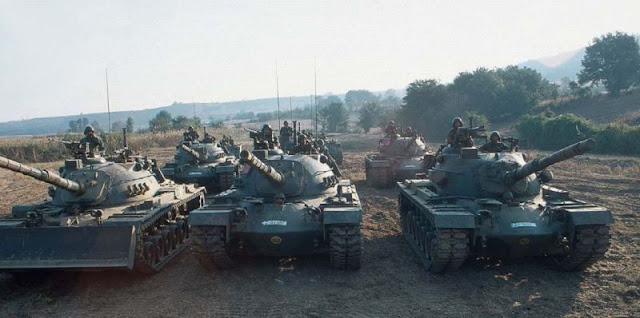














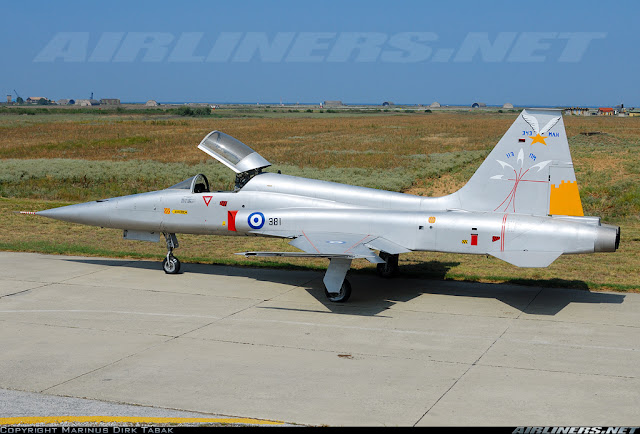





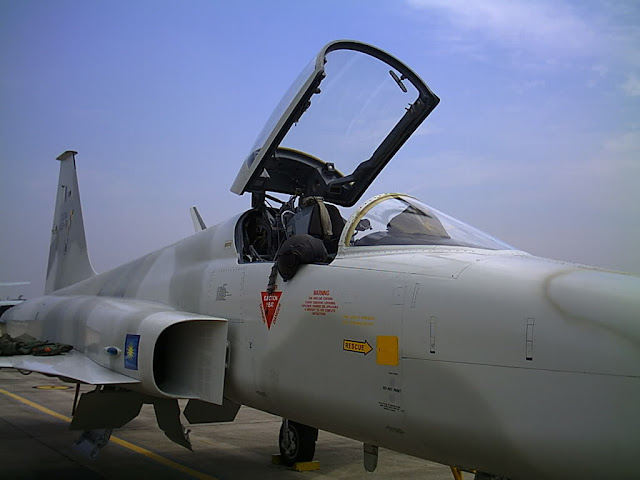






+(5).jpg)














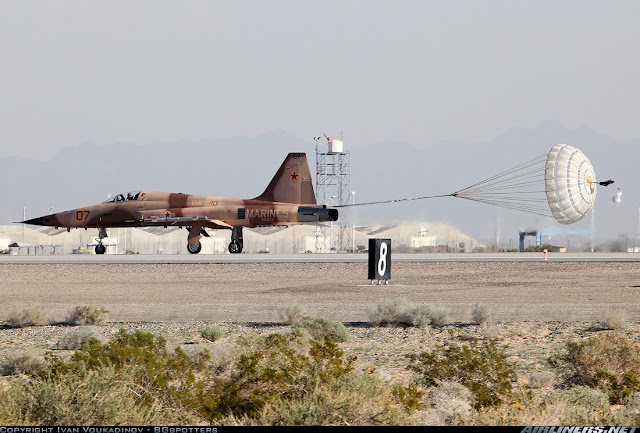












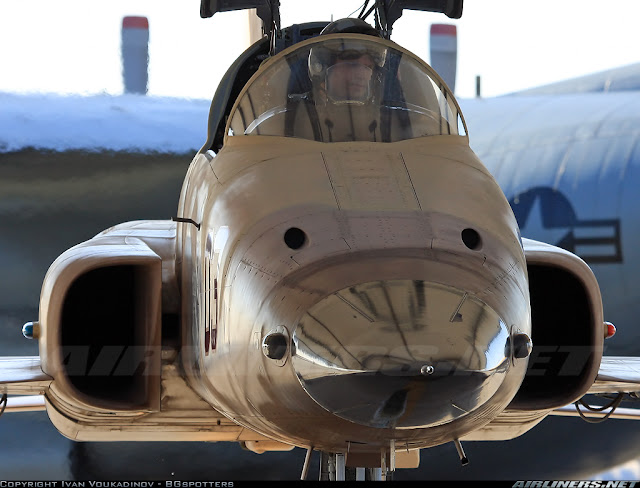

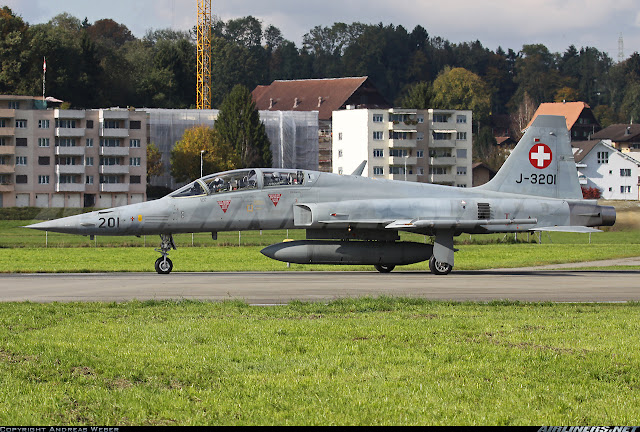







_in_flight_061006-F-1234S-084.jpg)





_061006-F-1234S-067.jpg)












